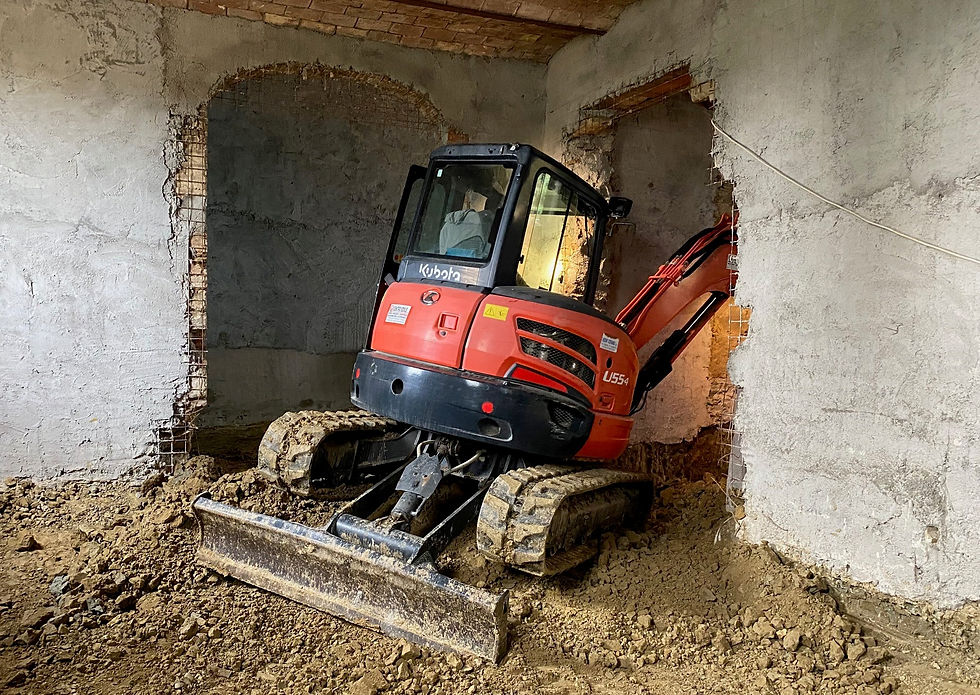Renovation and enhancement of Tuscan stone houses
- meonimarco7
- Mar 9
- 2 min read

Tuscany is renowned for its unique architectural heritage, characterized by stone buildings that bear witness to centuries of history and tradition. Renovating and enhancing a stone house does not only mean preserving its original aesthetics, but also improving its structural and energy performance, ensuring comfort and durability over time. This process requires a targeted approach, respectful of traditional materials and historical construction techniques.
Preliminary analysis and assessment of the building
Before starting any renovation work, it is essential to perform an in-depth analysis of the building to identify critical issues and areas for improvement. The aspects to evaluate include:
Structural stability : check the condition of the load-bearing walls and identify any lesions.
Presence of humidity : analysis of the causes of deterioration due to infiltrations or capillary rise.
Roof and system status : assessment of the condition of the roof and technological systems to ensure the safety and efficiency of the building.
An in-depth initial diagnosis allows us to define a targeted and effective intervention plan, minimizing unforeseen events and optimizing the available resources.
Consolidation and restoration interventions
1. Recovery and maintenance of walls
Stone houses require specific interventions to ensure their stability over time:
Cleaning and removal of impurities using non-invasive techniques, such as low-pressure sandblasting.
Restoration of joints with compatible mortars to maintain the integrity of the walls.
Anti-humidity treatments to improve breathability and prevent deterioration.
2. Energy efficiency and insulation
The energy retrofitting of a historic building must combine innovation and respect for tradition. Some effective solutions include:
Internal thermal coats with natural materials such as cork or lime.
Thermally insulated wooden frames that improve insulation without compromising aesthetics.
Integration of low environmental impact heating systems , such as heat pumps and underfloor heating.
3. Refurbishment of the roof
The roof is a crucial element for the protection of the building. The most suitable solutions for a renovation respectful of the traditional style include:
Restoration of the roofing with Tuscan tiles to preserve the aesthetic authenticity.
Using wooden structures with natural insulation to improve living comfort.
Possible integration of photovoltaic systems appropriately camouflaged to ensure reduced visual impact.
Interior finishes and aesthetic enhancement
To maintain the historical identity of the building, the choice of materials and finishes must be consistent with the original style:
Terracotta, natural stone or solid wood floors to maintain the rustic atmosphere.
Exposed wooden beams restored to emphasize the traditional character of the environment.
Natural lime-based paints to ensure breathability and an authentic material effect.
Lighting and furniture play a fundamental role in enhancing spaces:
Warm and diffused lighting , with the use of wall lamps and wrought iron lamps.
Wooden and iron furnishings , in line with the rustic character of the home.
Artisan details , such as Tuscan ceramics and linen fabrics, to enhance the harmony of the whole.
Conclusion
The renovation of a stone house in Tuscany represents a balance between tradition and innovation. A well-designed intervention allows you to enhance the existing building heritage, improving the functionality and comfort of the home without altering its original charm. Relying on specialized professionals is essential to guarantee a high-quality result, respectful of the history and landscape context in which the building is inserted.



Comments